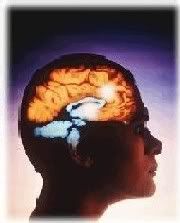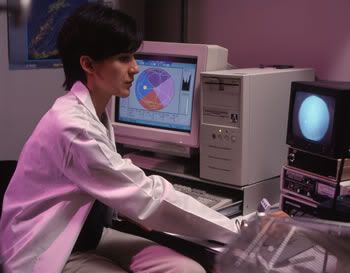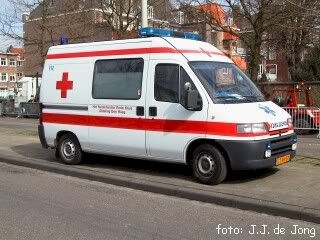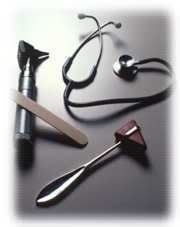Seizures associated with solitary cysticercus granuloma: Antiepileptic drugs for how long?.
In human brain parenchyma, the larval form of Taenia solium undergoes four stages of evolution, vesicular, colloidal, granular-nodular and calcification. The term, cysticercus granuloma is used broadly to parasites in the colloidal or the granular-nodular stages and these two stages are together considered as transitional or degenerative phase of the disease process.
Seizures associated with transitional phase of neurocysticercosis (NCC) are a consequence of inflammation around a cyst and these seizures as such may be categorized under acute symptomatic or provoked seizures. In developing countries transitional phase of NCC is probably the most common cause of acute symptomatic seizure(s). Multiple cysts, parenchymal and extraparenchymal, are more commonly reported in Latin American countries, where as there is an over abundance of reports of solitary cysticercus granulomas (SCG) from India. More than 90 percent of patients with SCG, the presenting feature is seizures. In our study of acute symptomatic seizures, NCC in transitional phase, was the etiological factor in 66 percent of the patients. Neurocysticercosis accounted for 10 percent of patients with seizures who presented to an emergency department in Los Angeles and 6 percent of such patients in New Mexico.
Acute symptomatic seizures generally tend not to recur and usually long-term antiepileptic drug (AED) treatment is not necessary. Even if AEDs are used to suppress recurrence of seizures, they generally do not need to be continued after the patient has recovered form the primary illness. These concepts are based on the basic assumption that acute symptomatic seizures presumably cease with the resolution of the precipitating cause or illness. Patients with SCG with seizure(s) provide a good model to study this concept.
There are no guidelines regarding the duration for which AED should be continued in patients with SCG. This is largely because of two factors: (i) variable seizure recurrence rate after the initial seizure and (ii) variable natural history of SCG.
Seizure recurrence in patients with SCG rate is high after a first seizure. In a prospective study of 77 patients with a first seizure and active or transitional NCC (this included 60 percent patients with SCG), 40.3 percent of patients experienced seizure recurrence. Kaplan-Meier estimated recurrence was 22 percent at 6 months, 32 percent at 12 months, 39 percent at 24 months and 49 percent at 48 and 84 months. The risk of seizure recurrence in patients with SCG is related to persistence of brain lesion.
The natural history of SCG can take one of the two courses: (i) it resolves entirely or (ii) it leaves a punctate calcification as residue. In some patients magnetization transfer magnetic resonance imaging (MRI) has shown presence of gliotic changes at the site of a healed granuloma. The duration or time of resolution of the lesion is quite variable. In a prospective study of 210 patients with SCG presenting with seizures, 18.8 percent of granulomas resolved at 3 months, 36.4 percent at 6 months and 62.5 percent at 1 year. Our long-term follow-up study has shown that seizures associated with SCG have good prognosis and AEDs can safely be withdrawn with the resolution CT lesion. Other authors have also suggested that AEDs can safely be withdrawn once the follow-up CT shows the resolution of the lesion. However patients with more than two seizures and those with breakthrough seizures need to be cautioned after AED withdrawal as some of these patients are at a risk of seizure recurrence. Where as the seizures associated with calcific stage of NCC are to be considered under unprovoked seizures and should be treated like any other remote symptomatic epilepsy.
In conclusion the present evidence suggests that patients with acute symptomatic seizure(s) associated with SCG should be treated with AEDs for two reasons: (i) seizures are likely to recur as long as the lesion persist and (ii) the time period for the resolution of the CT lesion is quite variable. The present evidence also suggests that AEDs can safely be withdrawn once the follow-up scan shows resolution of the lesion. Most often, good seizure control can be achieved with a single conventional AED (monotherapy). Dr Sandeep Kaushal and his colleagues in their article published in this issue have suggested that clobazam can be an alternative.
In their study clobazam was well tolerated, safe and effective in the treatment of seizures associated with SCG. Uncontrolled observations have also shown good efficacy of clobazam in acute epilepsy, in clusters, in serial seizures and as prophylaxis. Seizure clusters, breakthrough seizures and serial seizures are often the features of seizure disorder associated with SCG. The other advantage that seems to be of importance of clobazam use in these patients is a very low frequency of skin reactions with this drug. A high frequency of skin reactions has been reported among patients with SCG who are administered AEDs, most frequently phenytoin.
The exact mechanisms for this increased incidence is unclear and probably have an immune basis common to cutaneous adverse reactions and pathophysiology of neurocysticercosis. All these observation suggest clobazam as an alternative AED of choice, more so in patients who develop cutaneous adverse reaction to other AEDs. However we need more evidence to use clobazam as first line AED in these patients, probably a well-designed randomized studies including large number of patients.




0 Comments:
Post a Comment
<< Home